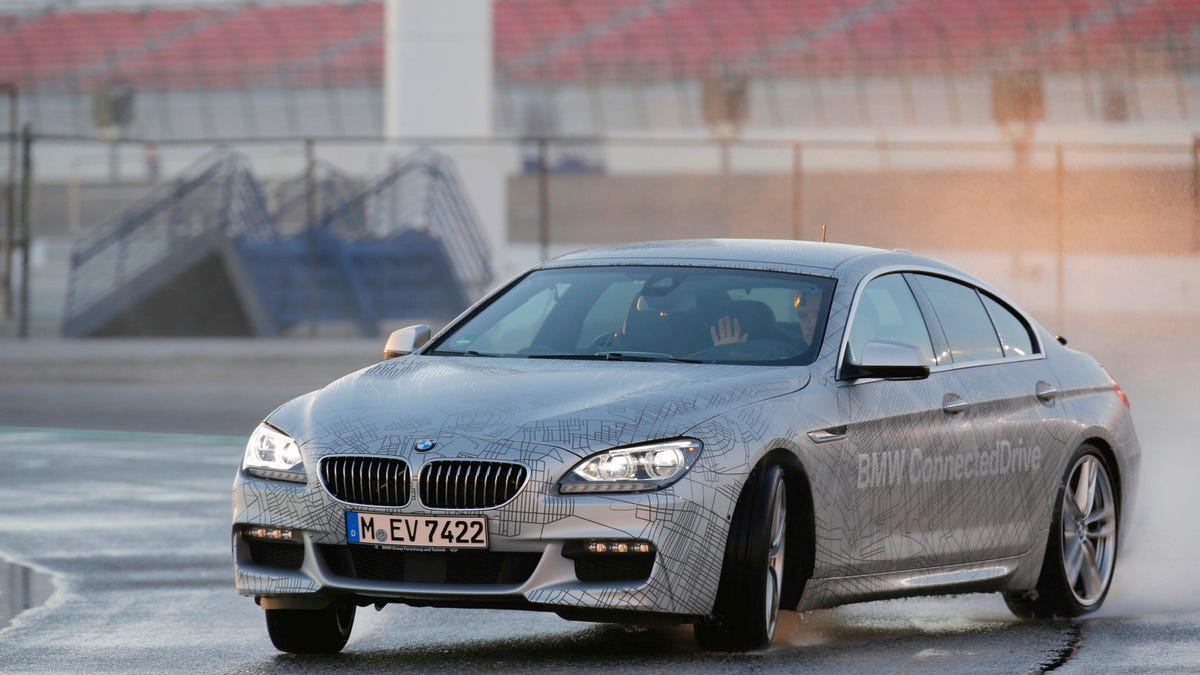BMW hits the performance limits with its driverless car
At a racetrack north of Las Vegas during CES 2014, BMW took me for a wild couple of laps at high speed, with no driver.

LAS VEGAS -- When you think about autonomous cars, it is often in reference to the sensor technology making the car aware of objects and other vehicles around it. Here at CES 2014, BMW showed off another technology key to making autonomous cars a reality, the systems needed to steer, accelerate, and brake.
And BMW demonstrated it on a racetrack with a 6 Series tackling a wet corner, a slalom, and s-turns at serious speed.
In fact, the 6 Series went as fast as its computer said it could without losing grip. I sat in the passenger seat while a BMW staffer sat in the driver's seat. He kept his hands off the wheel and feet off the pedals as the car roared toward the turns, hit the brakes, and swung the wheel over.
The most amazing part of the demonstration was the wet corner. To show the system's car control, BMW turned off the vehicle stability systems. As the car hit the wet, it lost grip and went into a sideways slide. The system counter-steered to prevent the car from doing a 180, keeping the slide under control until the car was back on dry pavement.
It may seem like cheating that, for this demonstration, BMW programmed the car's route in through GPS, which gave it the path around the track. But all the car control was handled by automated systems using sensors and an accelerometer to see how close the car was to losing grip, and braking or steering to maintain its path.
Werner Huber of BMW described how the system in the car was made up of a Lateral Control Unit and a Longitudinal Control Unit, each handling and interpreting their respective vectors of motion in the car. These components will be essential to a future fully autonomous vehicle.
In BMW's conception, the autonomous car could handle high-speed driving situations or unexpected low-traction surfaces.
Catch CNET's complete coverage of CES 2014
Huber said that, before the introduction of a fully autonomous vehicle, BMW would use this type of research to add features under what it calls Highly Automated Driving. Throwing out a few ideas, Huber suggested that BMW could launch an Intersection Assist, which would contribute to safety when crossing intersections, an Evasion Assist, which would help the car steering around objects or stalled cars, and a Lateral Control Assist, a type of technology that could complement or even replace vehicle stability control systems.
Of course, all these future systems would need a complement of sensors to help the car recognize objects and other vehicles, but BMW certainly seems to have gotten its car control systems right.

